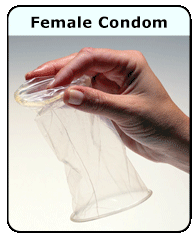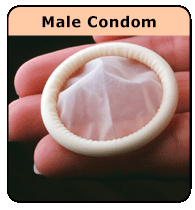- Home
- Parents Home
- Allergy Center
- Asthma Center
- Cancer Center
- Diabetes Center
- A to Z Dictionary
- Emotions & Behavior
- First Aid & Safety
- Food Allergy Center
- General Health
- Growth & Development
- Flu Center
- Heart Health
- Homework Help Center
- Infections
- Diseases & Conditions
- Nutrition & Fitness Center
- Play & Learn Center
- School & Family Life
- Pregnancy Center
- Newborn Center
- Q&A
- Recipes
- Sports Medicine Center
- Doctors & Hospitals
- Videos
- Para Padres
- Home
- Kids Home
- Asthma Center
- Cancer Center
- Movies & More
- Diabetes Center
- Getting Help
- Feelings
- Puberty & Growing Up
- Health Problems of Grown-Ups
- Health Problems
- Homework Center
- How the Body Works
- Illnesses & Injuries
- Nutrition & Fitness Center
- Recipes & Cooking
- Staying Healthy
- Stay Safe Center
- Relax & Unwind Center
- Q&A
- Heart Center
- Videos
- Staying Safe
- Kids' Medical Dictionary
- Para Niños
- Home
- Teens Home
- Asthma Center
- Be Your Best Self Center
- Cancer Center
- Diabetes Center
- Diseases & Conditions
- Drugs & Alcohol
- Expert Answers (Q&A)
- Flu Center
- Homework Help Center
- Infections
- Managing Your Medical Care
- Managing Your Weight
- Nutrition & Fitness Center
- Recipes
- Safety & First Aid
- School & Work
- Sexual Health
- Sports Center
- Stress & Coping Center
- Videos
- Your Body
- Your Mind
- Para Adolescentes
Birth Control: Condoms
What Are Condoms?
Condoms are thin pouches that keep sperm from getting into the vagina. There are male condoms and female condoms:
- A male condom is worn on the penis. It is usually made of latex, a type of rubber. But some are made of materials that are safe for people with latex allergies, such as polyurethane or polyisoprene.
- A female condom is inserted into the vagina. It has a flexible ring at either end. One end is closed and goes into the vagina; the other end is open and the ring sits outside the opening of the vagina. Female condoms are made from materials safe for people with latex allergies.
How Do Condoms Work?
Condoms work by keeping semen (the fluid that contains sperm) from entering the vagina. The male condom is placed on the penis when it becomes erect. It is unrolled all the way to the base of the penis while holding the tip of the condom to leave some extra room at the end. This creates a space for semen after ejaculation and makes it less likely that the condom will break.
After the male ejaculates, he should hold the condom at the base of the penis as he pulls out of the vagina. He must do this while the penis is still erect. This prevents the condom from slipping off when he gets soft, which could let sperm enter the vagina.

The female condom is inserted into the vagina using the closed-end ring. The other ring creates the open end of the condom. The condom then lines the walls of the vagina, creating a barrier between the sperm and the cervix. The female condom can be inserted up to 8 hours before intercourse. It should be removed immediately after sex and before standing up.
The male and female condoms should not be used at the same time because friction can break them, make them stick together, or make one or the other slip out of place during intercourse. If a condom breaks or slips, semen can get through, making the condom less likely to prevent pregnancy or STDs.
How Well Do Condoms Work to Prevent Pregnancy?
Over the course of a year:
- 15 out of 100 typical couples who use male condoms will have an accidental pregnancy.
- About 21 out of 100 couples who use female condoms will have an accidental pregnancy.
For added protection, it's wise to use condoms along with another method of birth control, like birth control pills or an IUD. For condoms to have their best chance of working, they must be used every time a couple has sex.

A condom cannot be reused. A new condom should be used each time a couple has sex and it must be used from start to finish to protect against pregnancy and STDs. Oil-based lubricants (such as mineral oil, petroleum jelly, or baby oil) should never be used with condoms because they can break down the rubber.
And a condom that seems dry, sticky, or stiff when it comes out of the package, or is past its expiration date, should be thrown away and a new one used instead. It's helpful to have several condoms on hand in case there's a problem with one. It's best to store unused condoms in a cool, dry place.
Do Condoms Help Protect Against STDs?
Yes. Latex, polyurethane, and polyisoprene condoms can help prevent many STDs if they are used correctly. Condoms made of lambskin do not work well to prevent STDs, especially HIV/AIDs.
Condoms do not protect against infections spread from sores on the skin not covered by a condom (such as the base of the penis or scrotum). Couples having sex must always use condoms to protect against STDs even when using another method of birth control.
Abstinence (not having sex) is the only method that always prevents pregnancy and STDs.
Are There Any Problems With Condoms?
Most men and women have no problems using condoms. Side effects that can sometimes happen include:
- an allergic reaction in someone with an allergy to latex condoms
- irritation of the penis or the vagina from spermicides or lubricants that some condoms are treated with
Who Are Condoms Right for?
Everyone should consider using a condom to help protect against STDs. Condoms may be a good option for preventing pregnancy for couples who are responsible enough to stop and put a condom on each time before sex. Because condoms are the only method of birth control currently available for men, they allow the male to take responsibility for birth control and STD protection.
Where are Condoms Available?
Condoms are easy to find in drugstores, supermarkets, and even vending machines. (In some stores, they're in the "Family Planning" aisle.) Condoms do not require a doctor's visit or a prescription.
How Much Do Condoms Cost?
Male condoms cost about $0.50 to $1 each and are less expensive when they are bought in boxes that contain several condoms. Many health centers and family planning clinics (such as Planned Parenthood) and some schools distribute them free of charge.
Female condoms are a little more expensive and cost about $2 per condom. Some health centers and family planning clinics have female condoms available for free.
When Should I Call the Doctor?
A female using condoms should call the doctor if she:
- might be pregnant
- has a condom break during sex
- has a change in the smell or color of vaginal discharge
- has unexplained fever or chills
- has belly or pelvic pain
- has pain during sex
A male using condoms should call doctor if:
- a condom broke during sex
- there are lesions or bumps on his penis, or his penis hurts
- discharge is coming from the penis

© 1995- The Nemours Foundation. KidsHealth® is a registered trademark of The Nemours Foundation. All rights reserved.
Images sourced by The Nemours Foundation and Getty Images.
